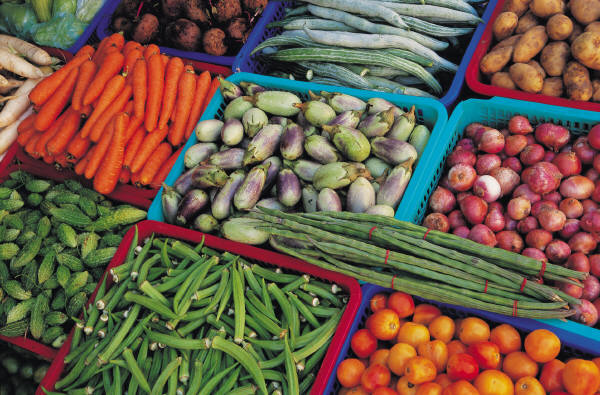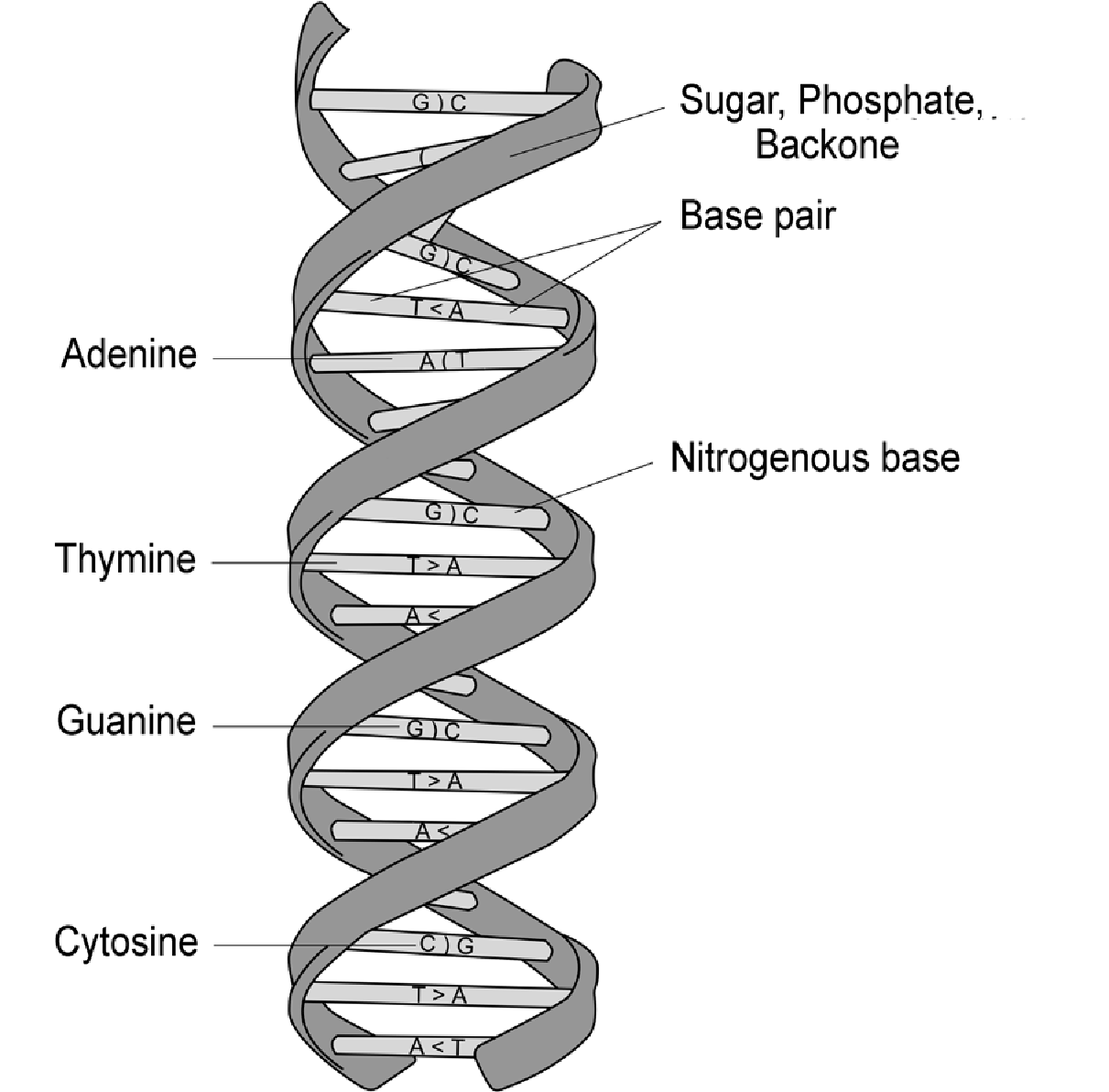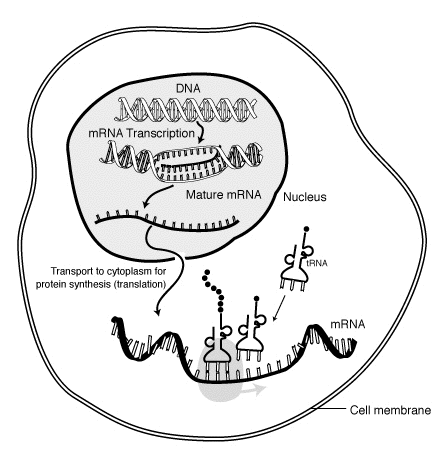Understanding Genetically Modified Organisms
FGV-00500 View this publication in PDF form to print or download.
What is a genetically modified organism (GMO)?
An organism whose genetic structure has been directly modified so that it will express a desirable trait is a genetically modified organism, commonly referred to as a GMO. The process of adding genes to organisms is also often called gene splicing or genetic engineering. The goal of genetic modification in agricultural crops usually falls within several categories: (1) to create plants with better flavor, (2) to improve nutritional qualities of food, (3) to produce higher crop yield, (4) to protect from insect pests, (5) to increase resistance to herbicides, (6) to increase resistance to diseases, or (7) to create plants with better tolerance of environmental conditions, such as drought.
Crops that are genetically modified have a number of potential uses, including the production of fiber, biofuels and foods. Crops that are grown specifically for food are commonly described as biotech foods, genetically engineered foods or genetically modified foods. Across all crops, instead of using the term GMO, many organizations, agencies, farmers and scientists have more commonly been using the terms genetically engineered (GE) varieties or GE crops. GE crops fall under the umbrella of what we call modern agricultural biotechnology. Creation of GE crops can also be used in combination with selective plant breeding to establish a viable crop. The amount of time required to establish a GE crop, from the time of experimentation to the time of production, can take many years.
What is a non-GMO?
 Non-GMO crops and their products are crops that have not been genetically engineered.
A nonprofit organization, the Non-GMO Project, works to ensure the sustained availability
of non-GMO foods and their products. The project provides knowledge about what GE
crops are, a uniform standard for what the term non-GMO means and a program for verifying
that products meet the non-GMO standard.
Non-GMO crops and their products are crops that have not been genetically engineered.
A nonprofit organization, the Non-GMO Project, works to ensure the sustained availability
of non-GMO foods and their products. The project provides knowledge about what GE
crops are, a uniform standard for what the term non-GMO means and a program for verifying
that products meet the non-GMO standard.
Leaders of the project follow a product verification program for verifying that products meet the non-GMO standard that consists of (1) identifying action thresholds for levels (percentages) of genetically modified material in crop seed (0.25 percent), human foods (0.9 percent), and animal feed (1.5 percent); (2) testing and auditing; (3) maintaining a product verification database; (4) providing a combination organic and non-GMO inspection service to reduce costs for growers; and (5) maintaining records throughout the product supply chain for product traceability. After verification, a product can receive the Non-GMO Project seal. More information about the Non-GMO Project can be found at https://www.nongmoproject.org/.
How are GE crops regulated and are they safe to eat?
Foods from GE crops must meet the same food safety requirements as foods derived from traditional selective breeding. The Food and Drug Administration (FDA), in conjunction with the U.S. Department of Agriculture (USDA) and the Environmental Protection Agency (EPA), regulates GE crops. For more information about how these foods are regulated, please visit the links below:
• www.fda.gov/Food/IngredientsPackagingLabeling/GEPlants/ucm461831.htm
• https://www.aphis.usda.gov/biotechnology
What foods are GE?
Genetically engineered foods began entering our food supply in the 1990s. Corn and soybeans are the most common GE food crops in the U.S. As of 2012, GE corn accounted for 88 percent of all corn planted, while GE soybeans accounted for 93 percent of all soybeans planted. The majority of these crops are used to create ingredients used in a variety of food products, such as corn starch, corn syrup, corn and soybean oil, salad dressings, breads and snack foods. GE sugar beets are used to make sugar for various food uses. Other GE crops include apples, canola, papayas, potatoes and squash.
What are the benefits of GE crops?
In the 1980s, Escherichia coli (E. coli) bacterium were inserted with the genes to produce human insulin to help people with diabetes. This type of genetic engineering is called biopharming. Prior to this, insulin was only obtained from slaughtered cows and pigs, which was inefficient and caused some patients to develop allergies to the animal-derived insulin protein. The establishment of GE bacteria eliminated this allergy concern and helped create a path for the research of more biopharmed proteins, such as antibodies and vaccines. Later in 2012, researchers in New Zealand genetically engineered a cow to produce milk lacking in a protein, beta-lactoglobulin (BLG), that can cause an allergic reaction in some children. This was the first time that scientists had successfully altered the protein composition of milk before it leaves the cow.
In the 1990s, genes from bacteria that break down glyphosate (the active ingredient in the herbicide Roundup) were inserted into corn along with a gene that produces the enzyme that glyphosate reacts with. The result was a corn plant that is resistant to glyphosate and will survive applications of an herbicide that kills almost all other plants. In the 2000s, corn genes were inserted into rice, which caused it to produce beta-carotene and vitamin A, giving the rice grains a golden color. Golden Rice (GR2E) was originally developed by the company Syngenta and then donated to rice breeders and scientists. While GR2E is not yet on the market in the United States, it was approved by the FDA in March of 2018.
What are the concerns of consuming GE foods?
There have been some concerns expressed over the possibility of genes being transferred from GE food products to cells within the human body. The World Health Organization has concluded that the risk of this occurring is very low and that there is even less risk of it having a negative impact on human health if it were to occur. Other concerns have been raised about whether or not allergen proteins might accidentally be implanted into GE foods. This concern is addressed through the FDA, since the FDA requires scientific evidence and labeling demonstrating that no allergenic substances have been incorporated into GE foods. Despite addressing these concerns, an opinion survey in 2015 found that only about 37 percent of consumers felt that GE foods were safe. Comparatively, the same opinion survey showed that 88 percent of scientists deemed GE foods as safe.
How do our bodies digest GE goods?
When our bodies digest food, the bonds between a protein’s amino acids are broken down into individual amino acids. This occurs in the same way for both GE foods and non-GE foods.
GE crop contamination prevention
Contamination of non-GMO crops should be prevented. Appropriate strategies during planting, cultivation, harvest, transport, storage and processing of crops need to take place to assure that there is not accidental mixing of GE and non-GMO materials. Potential sources of contamination include seed impurities, wind or insect-borne cross-pollination, escape plants, and/or inadequate harvest and handling practices. Preventative measures need to be taken on the side of both GE crop and non-GMO crop producers to reduce the risk of contamination. All GE crops should be appropriately managed, including herbicide-resistant canola, soybean, alfalfa, sugar beets and corn as well as insecticidal (Bacillus thuringiensis, Bt) corn, sweet corn and cotton. Alpha-amylase corn for ethanol should also be appropriately managed. Management strategies by the producers of both GE crops and non-GMO crops should aim at preventing and minimizing genetic drift, commingling and other forms of contamination.
Ongoing research questions and agricultural concerns
- How do we manage weed problems where natural mutations in existing populations of weeds, such as kochia and Palmer amaranth, have led to herbicide resistance?
- How do we prevent contamination of non-GMO crops?
- How do we address concerns by the public about GE crops?
- Can GE foods be utilized to prevent disease or poor nutrition in at-risk populations?
- If we develop crops that can be grown on more acreages across the globe, how will this affect the environment and ecosystems?
- How will GE crops affect the U.S. economy and global markets?
- Can the use of GE crops reduce the use of pesticides?
- How do we successfully manage all GE crops so that all risks are minimized?
APPENDIX: What is a gene and how is it used?

Fundamental to an understanding of genetic engineering is the knowledge of what a gene is and how it works. Human cells in our bodies have a nucleolus, and in this nucleolus are 46 chromosomes. The number of chromosomes varies widely among all the different life forms on Earth. Each chromosome is made up of numerous genes, which are segments of DNA that are arranged in a double helix (figure 1). The structure of DNA was first described by James Watson and Francis Crick, and they earned a Nobel Prize for this work. A specific gene is an ordered collection of four nucleotides that make up DNA.
The shorthand for these nucleotides is A, T, C and G. The order of the gene is transcribed by messenger ribonucleic acid (mRNA): A becomes U, T becomes A, C becomes G and G becomes C on the mRNA. The mRNA then moves the information out of the nucleus. Once the mRNA is where it needs to be, transfer RNA (tRNA) translates the mRNA using a three-letter code (figure 2) that selects for amino acids. The amino acids are linked up, forming a complex enzyme or molecule that serves a specific function.
There are genes that code for color. There are groups of genes that influence size or growth rate. There are genes that set up and regulate complex chemical reactions such as those associated with turning sunlight, water and carbon dioxide into sugar and oxygen. Some genes even regulate other genes.

Gene changes
Cosmic radiation and a wide variety of other random events may occasionally change one of the nucleotides in a gene. These changes are called mutations and they are what drive evolution. Experimentally, scientists have used mutagenesis to influence plant genes. Mutagenesis involves subjecting a plant seed to a particular chemical or source of radiation that causes a mutation. The mutated seed is then observed for effects and potential desirable traits to appear.
What could happen to an organism after a change in a gene?
It is entirely possible that a change to a gene may have no impact. For example, the set of three nucleotides described in figure 2 still codes for the same amino acid, or the gene is never activated to do anything. In this scenario, the organism will not be negatively impacted.
Under different circumstance, a change in a gene may result in coding for a different amino acid and what was supposed to be produced is not. Often there are multiple genes that do the same thing, and if one does not work, there are others that fill in the gap. But if the one affected or changed is the only gene that performs a specific task and the compound is not produced, then there will be consequences that will make that cell not function properly. In the worst case, the cell could die if some critical component is not produced. Fortunately, cell death occurs all the time. There is typically little overall harm in a multicellular organism, and the dead cell takes its mutation with it. Again, in this scenario, the organism will not be negatively impacted.
In the case of genetic change to a reproductive cell, there could be more substantial impacts. Any change to a reproductive cell would be duplicated over and over again as it multiplies. If this occurs, one of four results can occur:
- There is no impact (everything stays the same). • There is a change that results in cell death and the developing organism dies.
- There is an unfortunate change. For example, wing scale color is altered, making a moth more obvious to birds, which results in it being eaten and not producing any more moths of that color.
- There is a fortunate change. For example, wing scale color is altered, making a moth less obvious to birds, which results in it not being eaten and producing more moths of that color.
To simplify information, trade names of products have been used. No endorsement of named products by the University of Alaska Fairbanks Cooperative Extension Service is intended, nor is criticism implied of similar products that are not mentioned.
Casey Matney, Extension Faculty, Agriculture and Horticulture. Originally written by Stephen Seefeldt, former Extension Faculty, Agriculture and Horticulture.
Revised July 2024
